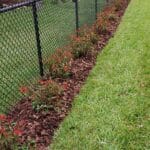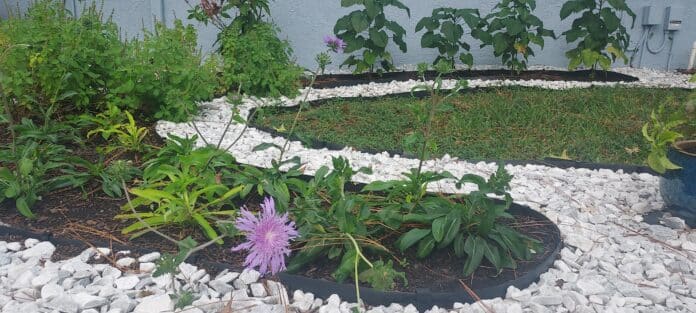People are waking up to their ignorance of the landscape. Native Plant Lives Matter.
Without our native plant life, especially the keystone plants like our live oak trees, we would not exist!
So what is a Native Plant, and why does it Matter? Well…. Do you eat? Do you breathe? Do you live on this planet? Are you the only one living? How do you know? Where is the line or boundary separating “this” thing from “that?” “This” plant from “that” plant. “Me” from “not me?” If millions of organisms (bacteria, insects, and species) we know as “other things” exist and we can see “their” existence, then what is it exactly that separates or creates a sense of separation from “that thing” and “me?”
Native Plants are some of “those things” that exist whether we know it or not. However, knowing it is vital in helping us realize a larger sense of being within our lives and realities. A more significant connection we all have to each other and our environment or bioregions. Our impact on our local bioregions impacts our children and their future. Native plants can be viewed similarly to the original Native American peoples that were here naturally before many other cultures interfered. There are native plants that are Florida native and North America native, state, or bio-region native. Non-native plants, however, can similarly grow in areas they were not originally from, much like these mixed cultures of people now all living together in the United States. Knowing this difference between native and non-native plants in and around our landscapes can significantly impact us as we choose new development, farms, and community needs.
For the same reason that you will not see a polar bear roaming the streets of Tampa, Florida, similarly, you will not see live oak trees growing in Alaska! This being said, plenty of non-native plants will thrive in this area and our landscapes. This does NOT make it okay to grow all non-native plants. Many of these non-native plants are damaging and harmful to our environments and livelihoods!
Planting or ignoring invasive, non-native plants in your landscape is like taking a loaded gun and shooting yourself in the foot to bleed out and suffer along the way slowly. However extreme this comparison may seem, it makes a painful point about how harmful some of our decision-making is to “other things” and “us” in our landscapes!
Important note: not all non-native plants are invasive. For more information on non-native and invasive plants, visit: https://www.fdacs.gov/Forest-Wildfire/Our-Forests/Forest-Health/Invasive-Non-Native-Plants
People are waking up to their ignorance of the landscape. The demand for edible and native plants is at an all-time high. Take a look at all the commercial lots, for example. Big corporations have invested in native plants such as coontie, pink tip muhly grasses, cabbage palms, and magnolias everywhere. Live Oaks are planted almost everywhere new development is implemented. Unfortunately, more must be done to make up for the clearcutting and burning of large old trees from development. With mostly sod and grass landscapes, invasive plants, and up to 500 acres per day going to development every single day, nature can not possibly keep up! This is leading to record insect, pollinator, and bird habitat loss. Every year, when not just “snowbirds” migrate south for the winter, birds have less habitat and food resources to sustain their populations. Not to mention misuse of our drinking water supplied by high-magnitude springs all over Florida. These springs produce only 66 million gallons of water per day. We Floridians consume around 3 billion gallons per day to irrigate our lawns. There are 27 magnitude springs in total all over the state of Florida. Sixty-six million times 27 springs are well under our 7 billion gallons of water per day use total water consumption.
Installing native plants not only reduces our overwater usage, but they also feed pollinators, are typically lower maintenance, and create colorful landscapes that provide essential wildlife resources all year long.
So why do Native Plant Lives Matter?
We are struggling to figure out how to use our landscapes best—competing with non-native invasive plants, cheap store-bought non-native plants from big box stores, and new developments. We require native plants as a foundation of support to sustain our lives. Without native plants, millions of organisms cannot live! This includes us! We get oxygen, food, clean water, and shelter from all the diversity within our ecosystems and environments. The more destruction we cause within our environments now, the less likely our kids will be able to live in the future! Strategic planning for our children’s future in our landscapes is the way toward health and wealth. So don’t continue to make poor decisions our kids have to live with and teach them about the importance of native plants, the difference between native, non-native, and invasive plants, and please, for the love of something larger than “you,” support your local Native Plant Society!
To learn more about Native Plants, research the Native Plant Society near you: “https://www.fnps.org/”
For a more extensive understanding of our current relationships with our native plant friends and how to strengthen or restore this to health and or balance, read or listen to the audiobook “Bringing Nature Home by Douglas W. Tallamy” and visit: “https://homegrownnationalpark.org/”
It’s all about the right plant in the right place and planting productive and functional plants that are both edible and or native when it comes to healthy landscape practices. This is our way to a healthier future that is at least more balanced than what we are experiencing now in our environment. Our kids deserve healthy, productive landscapes and farms as a human birthright to local resources. We are all connected to our landscapes and environments, and you cannot be healthy in an unhealthy environment.
Native Plant Lives Matter.
Steven Turner is the owner of Plant Lives Matter LLC. You can find him on social media platforms @plantlivesmatterllc. You may see him around Hernando County enjoying the beautiful land and working to improve our natural resources.
https://plantlivesmatter.work/


